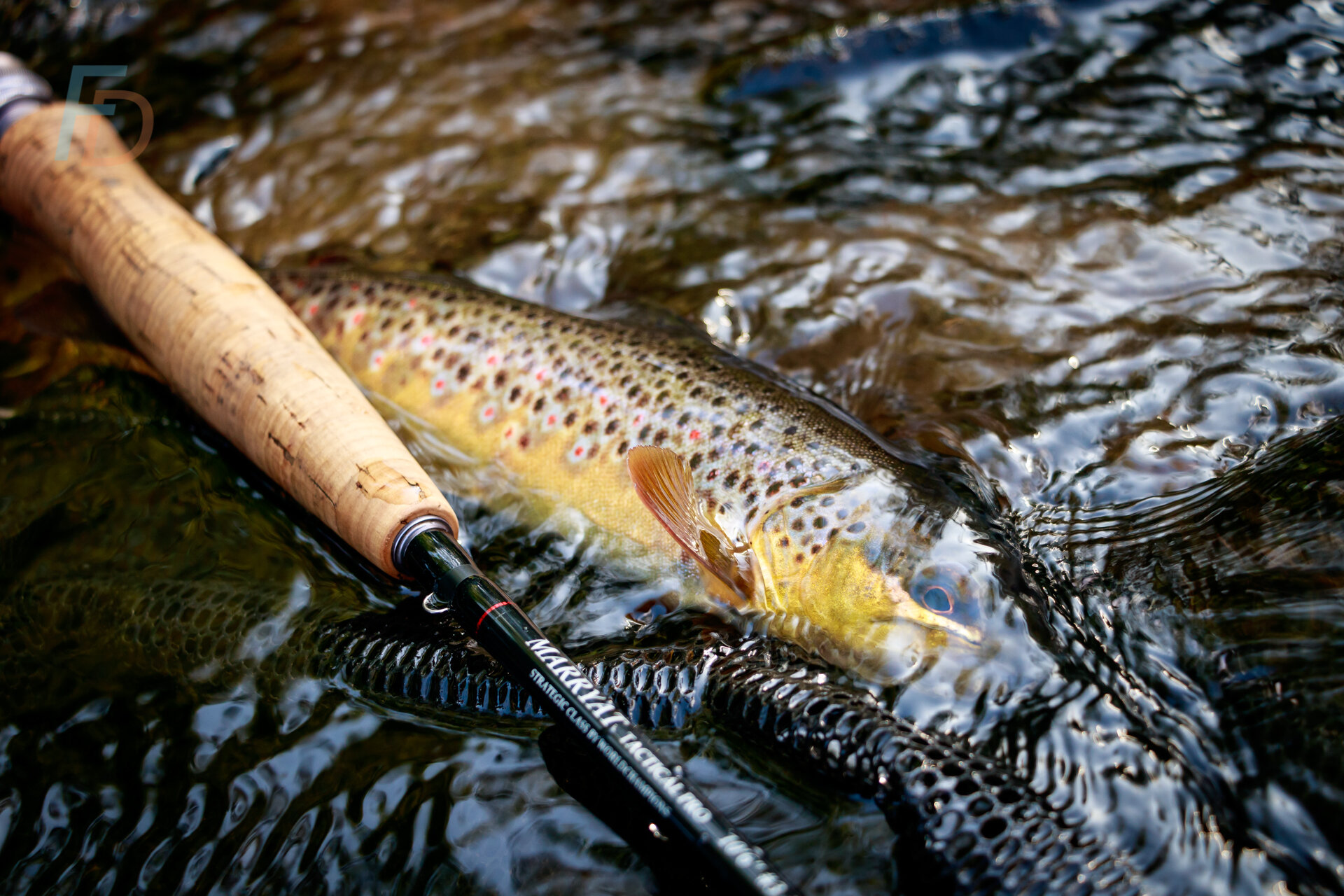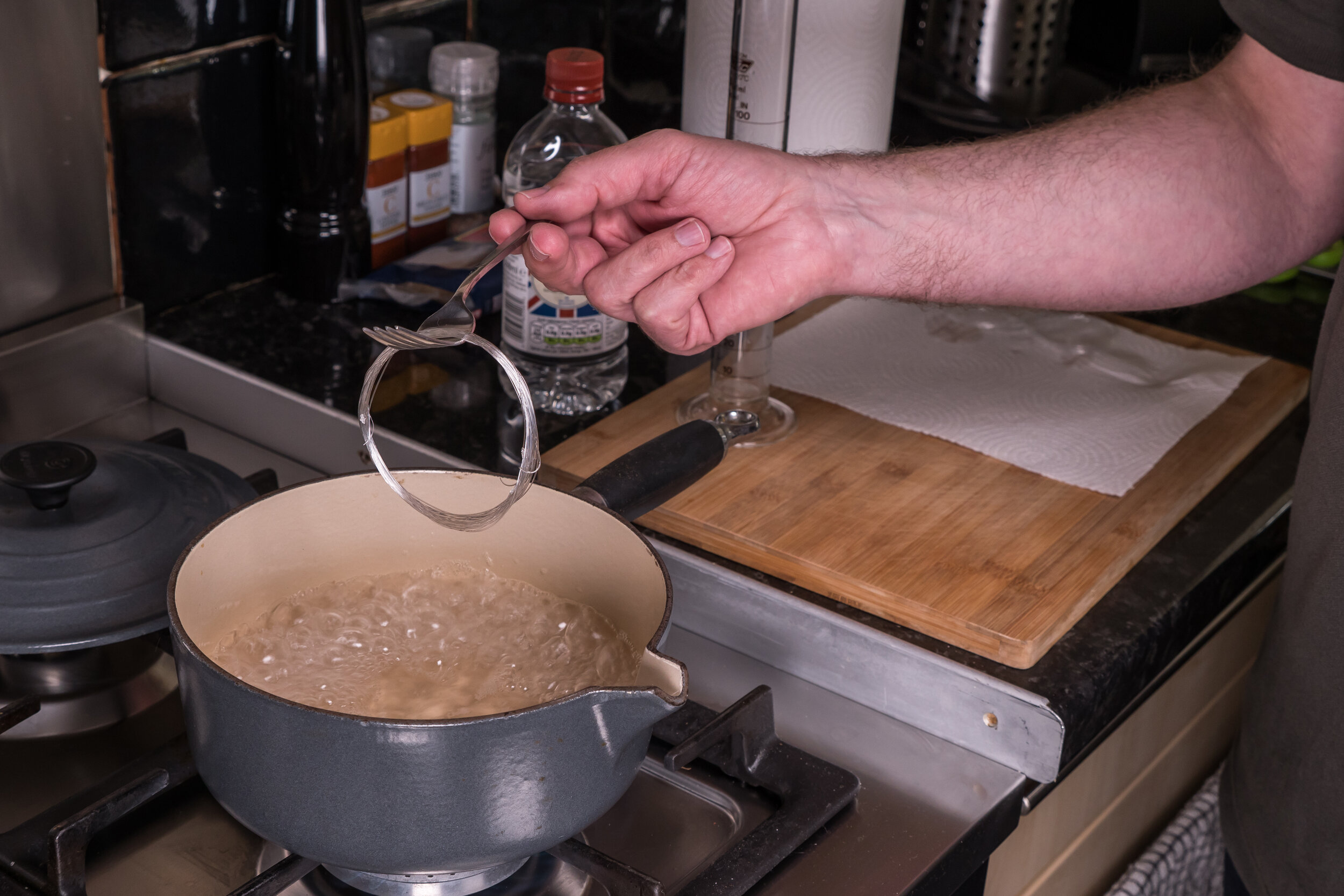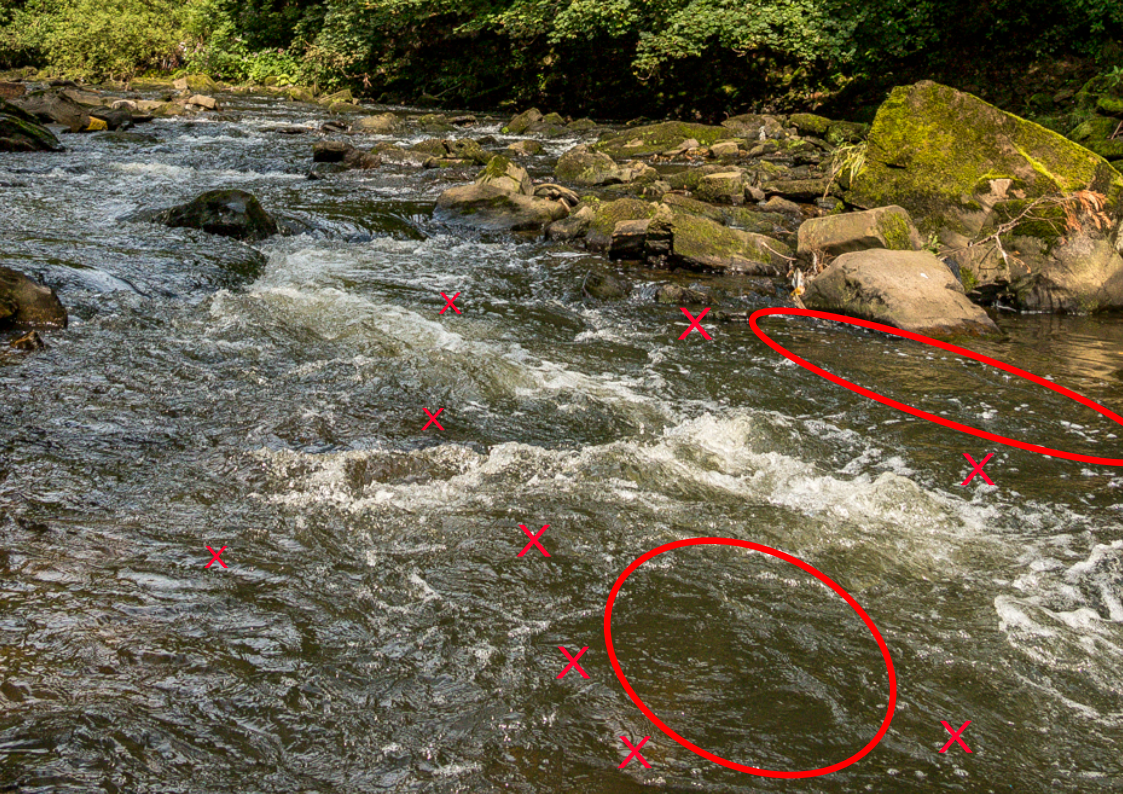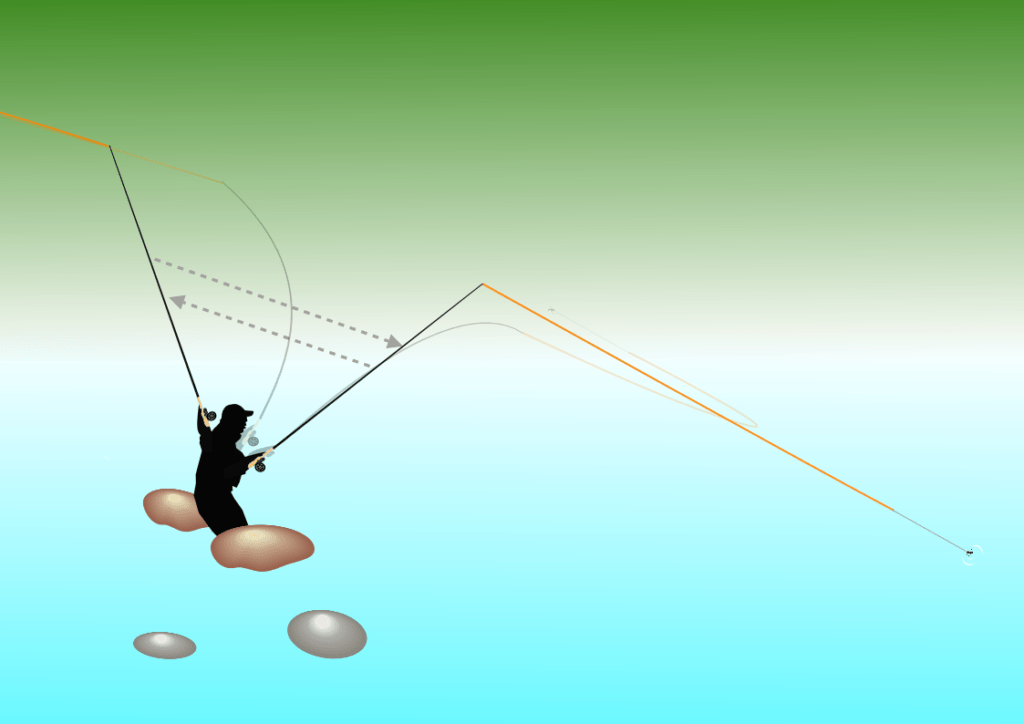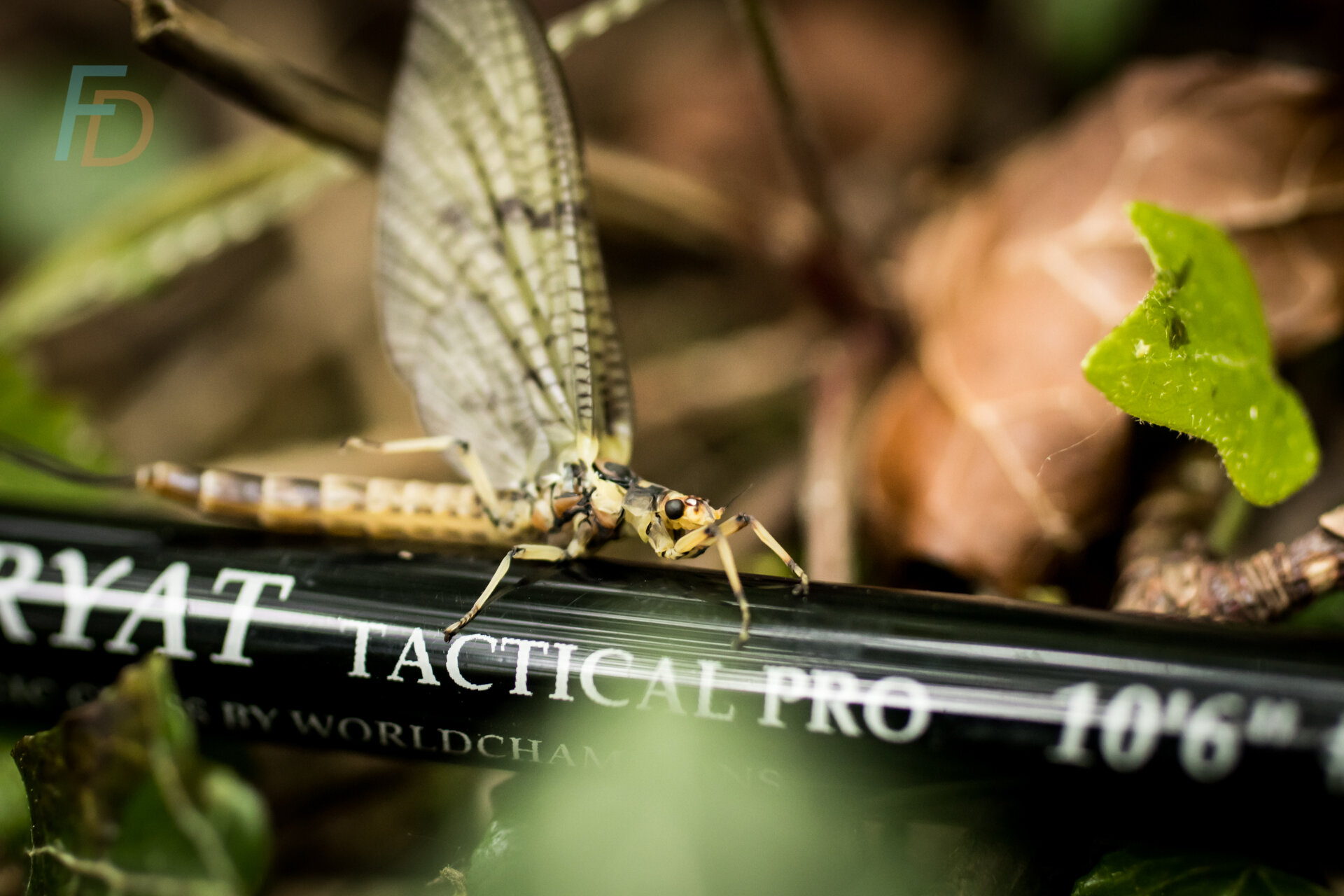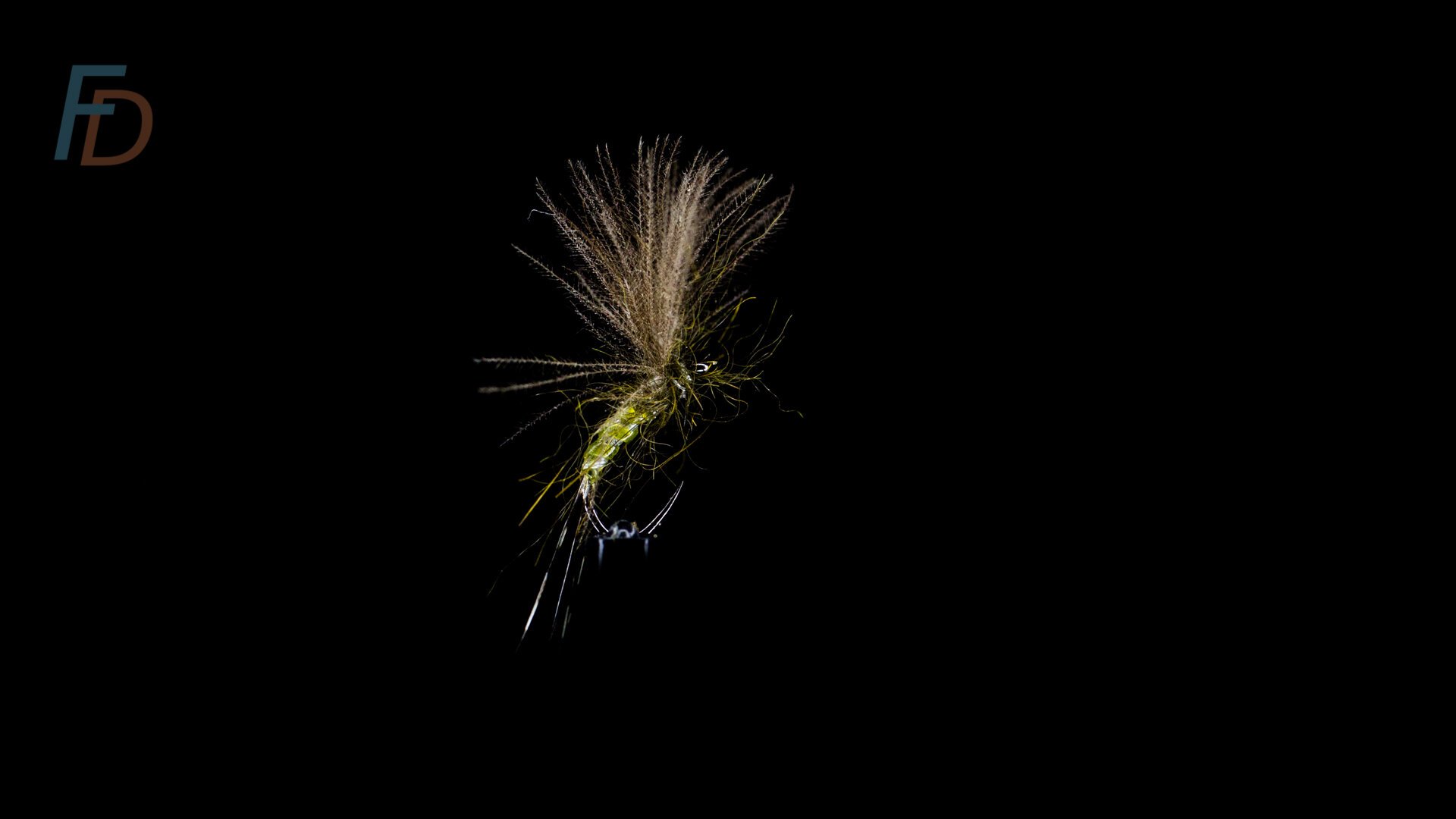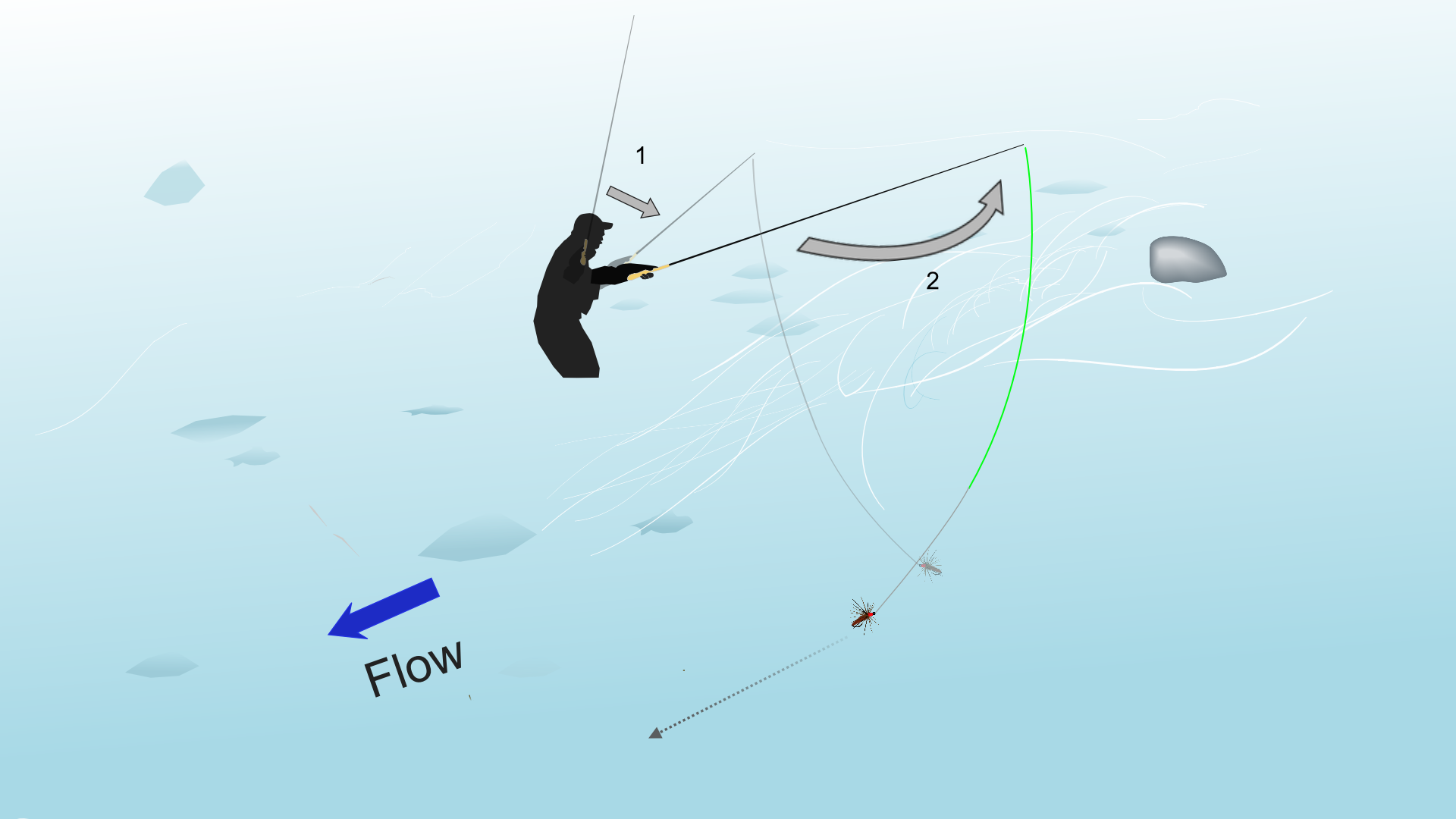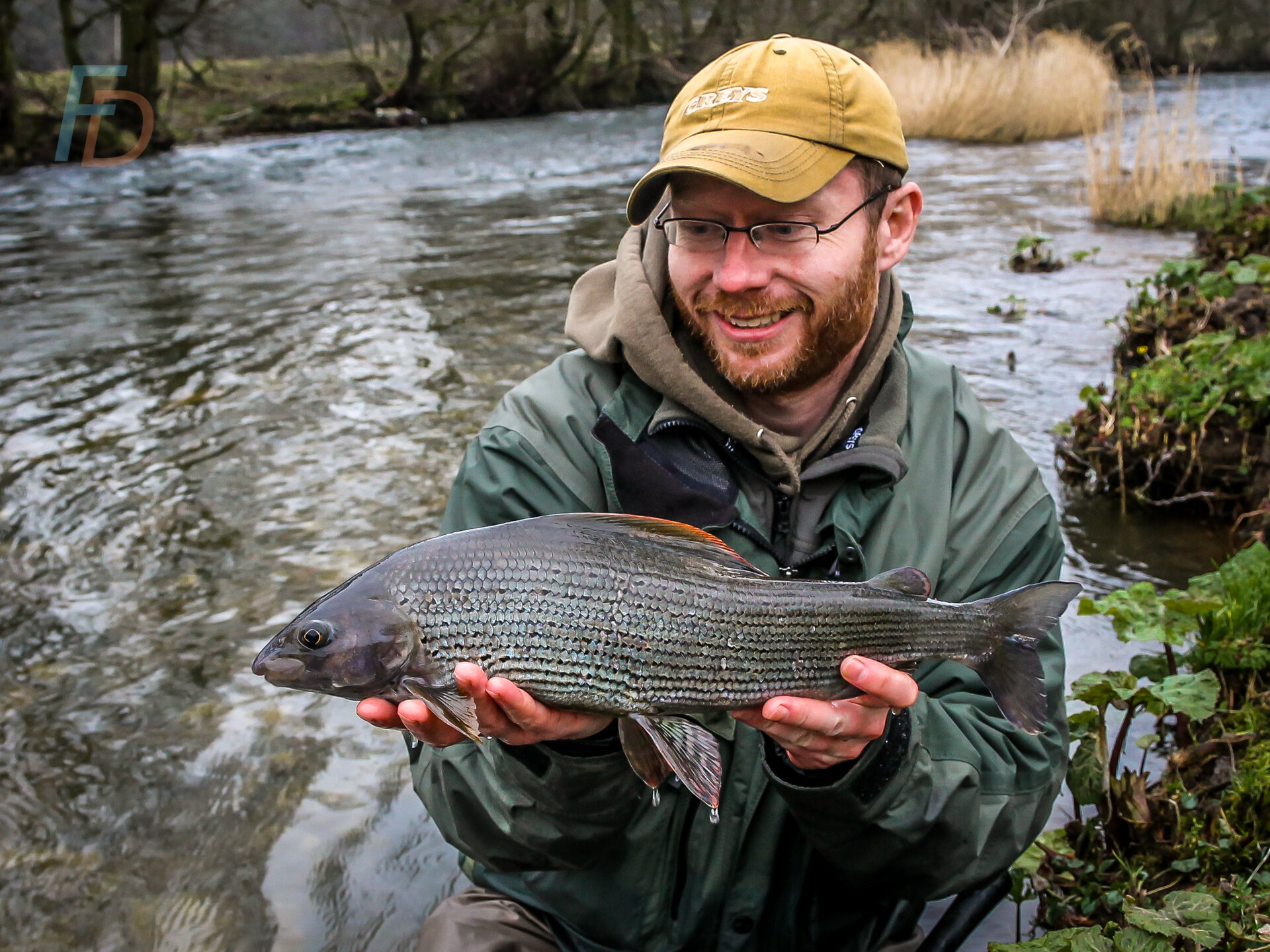
Paul Gaskell
The Floating Fly: Dr Paul Gaskell
Chris, there is a powerful temptation to make my contribution here just three words and – although undoubtedly a cop out – I don’t think your readers would be too ill-served by that. You see, the three words that spring to mind come from reading the existing contributions to The Floating Fly project; and they would be:
“What They Said”
I find myself nodding along with so much that is written here already, so my challenge is to first of all encourage people to take in all the value that already exists on these pages. Secondly, I suppose the most value I can add is for me to attempt to add a unique angle. At the same time, it is wrong for me to give the impression that my normal “day-to-day” dry fly fishing would look significantly different from the activities and gear described by your other contributors. For me, it is about having tools in the box – and then doing a good job at matching those tools to the challenge at hand.
1. Choice of equipment Rods, reels, fly lines, fly floatants, clothes, glasses, and other useful items.
A dominant theme that I keep coming back to in my fishing is the idea of “signal” to “noise” ratios. In other words, what a fish perceives as a jumble of irrelevant background noise – versus the more important signals of “food”, “predator”, “potential rival” or “potential mate”.
Most of fly fishing coverage concentrates on the “food” signal created by your exquisitely tied fly and the casting/line-management to avoid the drag that might spoil the illusion. This is the sexy part of fly fishing.
For me the (unsexy and under-reported) most important factor in fly fishing is the angler’s version of the Hippocratic oath “First Scare No Fish”. In other words, if my equipment and clothing helps me to avoid scaring fish (and to be more like background noise than a predator); then I am already winning. Or, at least, I haven’t immediately lost before I even made a cast…Of course, sometimes it is fun to catch fish in spite of (rather than because of) what we’re wearing or swinging around over our heads – but that is part of the playful nature of the game.
Also, it is undoubtedly a big advantage to have good quality polarizing glasses – and I currently have a pair that an optician friend kindly had made for me (which are light-reactive as well as polarizing prescription lenses).
For the slightly quirky take on dry fly fishing that I’m going to offer here, I will suggest rods such as the excellent Marryat Tactical Pro Nymph Special in 10’ 6” and AFTM #3 as well as (shock horror) our Karasu 360 and 400 tenkara rods. I am also extremely keen to try out the Hardy Ultralight LL in the 10’ 8” #0-2 and the 11’2” #2 for reasons that will become apparent.
2. Leader material, build-up, length and knots.
For this style of dry fly fishing, the “fly line” needs to have sufficient mass (and perhaps appropriate taper) to create a fly-casting loop. At the same time, it must be light enough to be held off the water at an angle for the majority (or sometimes the entirety) of its length. This is a big ask. It is not, generally, good enough for the casting line to simply hang down vertically (or nearly so) from the rod tip…That being said, there are several ways to achieve that type of performance. The classic way would be using the more traditional French leader recipes from the early 1990s that incorporate relatively thick butt sections. At the risk of triggering the heavy plug alarm, there is extensive video and written coverage of the materials, knot skills, tapers and even chemical treatment used to create those leaders in “The Fly Fishing Bible of Nymphing”. The short cut way is to buy one of the leaders sold by Fish On Productions – since that’s how they are constructed and treated (no commission involved, in case you were wondering!).
Another great option are the 7-m, supple and factory-tapered “Fujino” nylon tenkara lines (particularly in the ice-blue option, with the longer and more delicate front taper). Amazon Japan might help you dig one of these up.
Finally, the most blasphemous option of all would be the level fluorocarbon casting lines rated between #3 and #4 on the Japanese “Gou” scale of diameter (actually cross-sectional area, but that’s splitting hairs; pun and mixed metaphor intended). These come in a variety of more (and less) stealthy colours – and that can be a key choice on particular days. A good stealthy – but still visible – option is the Sanyo Valcan line in a very pale/whitish olive.
Whatever “casting leader/line” option you choose, adding between four and seven feet of tippet in the 0.10 to 0.12-mm diameter ballpark is usual.
Each of the above options can simply be knotted to a standard loop at the end of your regular fly line (and, when matched well to rod and leader, you can extend and cast your fly line too if you want). Tippet can be attached by forming a stopper knot in the tip of your leader/casting line (with a single figure of 8 knot) and then “girth hitching” a figure of 8 loop in the butt of the tippet around that main-line. Wetting this and sliding it so that it snugs up behind the stopper knot makes a very strong joint – while avoiding the more bulky option of a perfection loop at the end of the leader/line.
3. Approach and stealth.
Here is where understanding positioning – and the available disguise (or areas of increased background noise) come into play. The high rod tip/Triangle of Awesome (it is supposed to be a silly name so you remember it) also gives some inherent stealth benefits. By making the fly the only thing which splats down on the water, fish naturally give that their attention. In flat calm water, this saves the need to create a long separation between the fly and the casting line which lands - pretty hard even with zero weight lines – on that smooth surface.
You will still, of course, encounter situations – particularly when you are close to level with the fish across the stream – when you’ll need to cast with your rod low and parallel to the water. Even here, though, there is an advantage to laying down “leader” rather than even the thinnest of micro-thin fly lines on flat water.
When you have pocket water, or any situation where you can place broken, riffled water between you and the fish, you are laughing. It gives you both stealth and excellent drift control – which is where the long rods come into their own from a stealth AND presentation perspective.
Spoiler alert – it involves a “Triangle of Awesome” style presentation. This is where the casting line and high-angled rod form two, roughly symmetrical, slanting sides of a roof; with the base of that triangle beneath the roof formed by the completely undisturbed water between angler and fish. It looks like this:
4. Reading the water.
An unfair category for the confines of a single article! Capturing the essentials of reading the water is a bit like catching fog at the best of times. With the understanding that whole multi-volume book collections could (and probably should) be written on this; my simplest advice is to look for edges. Simple advice is often entirely different from “easy”, mind you. The edges and boundaries are where all the most interesting things in biology happen. For instance, the boundary between shallow and deep often gives cover for the predatory trout (in the depth) – adjacent to the food-factory riffles (in the shallows) for the prey. Similarly, the boundary between fast and slow currents often concentrates prey – while affording an easier lie for predator in the slower flow. The edge between shade (cover for the hunter) and light (conspicuous, vulnerable prey) can also be a sign to read.
If you can become great at recognising the merest sign of a trout disturbing the water, then you will have a significant advantage as a dry fly fisher. This, I have to say, is where I am most impressed by a handful of truly exceptional fish-spotters – including Paul Procter and also my colleague at the Wild Trout Trust, Gareth Pedley. However, even if you don’t have the eyesight and visual cortex of a golden eagle, you can tip things a long way in your favour by knowing where to look for rises…
Any time you can link a food source to a concentration of that food (say, by watching a foam-lane) – and, for full bonus points, locate a nearby bolt-hole; then that is a good area to pay close attention to. Within pocket water, it isn’t always even necessary to spot rises – as long as you can recognise the prime real estate of the pockets of soft flow between the tongues of current. The generally rough water around such pockets mean that you can prospect with your (bushier than average) fly - and all the casting line and tippet off the water - with little fear of spooking a non-target fish. By contrast (and going back to approach and stealth), firing off blind casts in flat water with no clearly identified - preferably feeding - fish is usually counter-productive.
5. Casting ability which casts are essential.
Again, to avoid too much duplication with other contributions and to stick with the unconventional “line off the water” approach; a secret weapon is the fly-first cast. In this particular case I don’t want to confuse this with a downstream, parachute cast approach where the fish sees the fly before your tippet (another great tactic). Instead, this one is a kind of aerial fly-first delivery. Under ideal conditions, it could be termed the fly-only cast, since avoiding even the tippet touching down is a significant advantage.
The key elements are a narrow casting arc – with the back-cast angled upwards and backwards and the forward cast angled diagonally forwards and downwards. A high stop position of the rod-tip on the forward cast is essential. That’s what sets up both the fly landing first – and also means that the casting line/leader is firmly set in a perfect fishing and drift-control position.
6. Entomology, what should we know.
On the one hand, trout use extremely simple visual cues to recognise prey. It seems that overall size, proportions and, perhaps, the presence of appendages are enough to match the search-image for what trout tend to eat. However, as simple as those cues can be, if your imitation doesn’t quite tick the right boxes it is treated as irrelevant noise.
Another important part of that prey image is often the behaviour – as well as the outline – of the real prey and also your imitation. Behaviour could include completely natural, dead-drift (in the case of spent spinners for instance). At the same time, more often than most anglers latch onto – it also includes active, organised movement.
Taken together, this means the more you know about the identity and habits of the available food, then the better chance you have of matching the profile and – crucially – the behaviour of what the trout are eating. It’s certainly not necessary to know the names of each specific fly – as long as you can observe them well. With that said, it will always help if you know something specific and unusual about the behaviour of particular insects that you can recognise at range.
The nice thing about this is that you can be successful with no formal knowledge of entomology – yet the fish will also reward your interest and any study of insects and their habits. In this way, there is a reasonably low barrier to entry leading to a life-long path of progress to keep you interested (if you want to pursue it).
7. Rise forms Can they tell us something?
Rise forms can absolutely tell us a great deal – from the size, position and developmental stage of what fish are eating; to the holding depth of the fish. The more subtle the rise, the closer to the surface the fish is – and the merest tilt upwards will poke just the tip of its snout through the surface. The rolling head and tail action indicates that the fish is returning to a slightly deeper holding station – and is often associated with emergers within the surface film. A splashy rise often indicates a chase and smash/grab of either a fully emerged dun (about to escape) – or potentially a rapidly ascending pupa (with the fish over-shooting after engulfing the rapidly moving prey). Those splashy attacks are in contrast to the unhurried and efficient feeding that seems to be associated with prey glued on or in the surface film.
8. Fly selection, Size, shape, materials, which flies are essential.
I like basic template style flies that are more impressionistic than close copy. Having a template for upwing duns, emergers and surface-spinners and varying the size as needed appeals to me. Similarly, very loose caddis, midge and stonefly templates that can be easily varied in size are also appealing. Of course, there will always be a place for some very specific applications – such as aphids or local speciality hatches such as salmon fly or green drakes. The dry fly article here https://fishingdiscoveries.com/dry-fly-fishing-for-trout/ gives specific examples and photos of simple, shabby – yet very effective – prototypical flies.
9. Presentation and drifts.
Always try to make every cast with the intention of it catching the fish. Trying for a kind of one-shot/one kill approach every time helps you make the best of your opportunities – even if you fall short of that ideal.
All other things being equal, trying to make the drift as short as possible has its advantages. There are fewer things to go wrong in a shorter window of time – and there’s nothing worse than disastrous drag kicking in exactly at the point where you expect the rise. Equally, incorporating the right kind of controlled movement (rather than an arcing, swinging pulley-wheel effect) is a real secret weapon in dry fly fishing. This is another aspect where having fly line and leader laying on the water is a big disadvantage. Maintaining a direct connection between rod tip and fly – with nothing touching the water between – is a very powerful tool. It allows you to create lifelike struggling motion without spooking fish with disturbances from the line.
10. Upstream or downstream?
Rules permitting, the best dry fly skills are on display when it can be enjoyed as a 360-degree activity. In reality, the most important direction of flow is not that of the water – it is that of the wind; since that has much more influence on cast and drift control. For me, there is very rarely more than one absolutely perfect position from which to cast to a particular fish. Usually, for the tackle, line and fly you have there is a single optimum place to stand and make your cast. For any given rig, the combination of wind, water currents position of the fish and position of obstacles – plus the amount of “contact” you’ll have when you set the hook define what that position must be. Yet, with different rod-lengths and weights of casting line, the same combination of environmental conditions can create a different optimal spot to cast from. I find that puzzle really fascinating and enjoyable – as well as frustrating when the plan falls apart. Personally, restricting anglers to casting in a certain direction to the flow has a kind of quaint and somewhat romantic appeal. Ironically, at the same time I also suspect it reduces the puzzle to fewer moving parts and so closes the “angling skills wealth-gap” between more and less-able anglers.
11. Fighting fish.
A few simple notes on fighting fish should include the advice to generally have a high rod tip when playing trout – and a low (if not submerged) rod tip for playing grayling; particularly when they get downstream of you. Always keep as short a line as possible on a fish – following it if you can (and making sure you are as close to it as is possible when you hook the thing in the first place). Making sure to concentrate on pulling at right-angles to the long axis of a strong trout will help to avoid getting into a straight tug of war. Conversely, when grayling want to twist and thrash near the surface, pulling them down towards the river-bed tends to help them settle down and come more “in line” with the current. That greatly reduces the chances of the hook pulling – though for maximum sneaky finesse; just maintaining the gentlest possible pressure to avoid a grayling bolting can sometimes let you walk up behind it and net it.
